Table of contents
Lime juice (preferably organic ) is often used in cocktails, but also to flavor hot and cold dishes. Whether lime juice is raw depends on the production process.
Use in the kitchen
By squeezing limes, you get lime juice, which makes up more than 50% of the total mass of the fruit. 1 As lime refers to several species of the citrus plant genus ( Citrus ). The best known are the common lime ( Citrus latifolia ), also known as the Persian lime or Tahitian lime, and the true lime ( Citrus aurantifolia ), also known as the Mexican lime.
When it comes to fruit juices such as lime juice, a distinction is made between fresh juice, direct juice and fruit juice from concentrate. Fresh juice is pure, unprocessed fruit juice from pressed, raw fruit. Direct juice is fruit juice that has been pasteurized for preservation. When producing fruit juice from concentrate, freshly pressed fruit juice is processed into fruit juice concentrate in the country of production. The concentrate and flavoring are then transported to the consumer country, where the fruit juice is reconstituted by combining concentrate, flavoring and water and preserved by pasteurization. Whether lime juice is a raw food product depends on the production process. Pasteurized juices are not raw in principle, as they are usually heated to over 42 °C during pasteurization. However, raw fresh lime juice can easily be made yourself (see the "Your own preparation" chapter).
Because of its intensely sour taste, lime juice is not usually consumed raw and pure. It is often used to give drinks and dishes a sour note. Lime juice is an important ingredient in many cocktails, such as Caipirinha, Cosmopolitan, Cuba Libre, Daiquiri, Mojito and Margarita - all of which can also be made non-alcoholic. It is also the main ingredient in Lime Juice Cordial, a sweetened lime juice with less sugar than lime syrup, which is needed for the Gimlet cocktail. Delicious lemonades, iced teas and smoothies can also be made with the sour juice of a lime.
Lime juice is particularly popular in East Asian and Mexican cuisine. Its aromatic, sour taste is used for vegan, Asian rice dishes, noodle dishes (e.g. Pad Thai), wok vegetables and curries, but also for chili sin carne, fajitas and tacos. In guacamole (Mexican avocado dip), lime juice also prevents the avocado flesh from turning brown. The juice also refines soups and risotto and flavors marinades, sauces and salad dressings (e.g. raw vegan radish salad with apple and lime dressing , tomato-avocado carpaccio with poppy seed-lime dressing ). Lime juice can also be used to prepare vegan desserts such as sorbets, creams, tarts and cakes.
How do you balance out too much lime juice in your food? If you have put too much lime juice in your food, you can reduce the acidity with the sweetness of agave syrup , for example.
Making your own
Raw lime juice is easy to make yourself. You need fresh organic limes, a cutting board, a knife and, if necessary, a manual or electric citrus press. First, roll the limes over the cutting board a few times, applying light pressure (this will give you a lot of juice). Halve the fruit and squeeze it with a citrus press, or cut it into small pieces and squeeze it by hand. If necessary, strain the juice through a sieve to remove the seeds and pulp.
How much juice does a lime have? Most limes are over 50% juice. 1 Depending on the lime (size, weight), this results in between four and eight tablespoons of juice per lime.
Vegan recipe for rice pan with lime juice
Ingredients (for 2 people): 200 g jasmine rice or basmati rice , 200 g smoked tofu, 2 carrots , 1 red onion , 2 tbsp dried cranberries , 1 tbsp rapeseed oil , 100 ml lime juice (preferably raw and organic), 3 tbsp soy sauce , 1 tbsp maple syrup , 1 tspblack pepper , coriander leaves and fried onions .
Preparation: Prepare rice according to the instructions on the packet. Cut the smoked tofu into small cubes. Rinse the carrots, peel if necessary, and cut into slices. Peel and dice the red onion. Heat the rapeseed oil in a large frying pan and fry the smoked tofu for a few minutes. Add the carrot slices and onion cubes. Meanwhile, mix the lime juice, soy sauce, maple syrup and pepper in a small bowl. Add the cooked rice, cranberries and sauce to the frying pan and mix. Fry for a few minutes, stirring regularly. Serve the vegan rice pan with lime juice on plates and garnish with coriander leaves and fried onions.
Vegan recipes with lime juice (raw) can be found under the note: " Recipes that have the most of this ingredient ".
| Not only vegans or vegetarians should read this: Vegans often eat unhealthily. Avoidable nutritional mistakes . |
Purchasing - Storage
Most supermarkets (e.g. Coop , Migros , Spar , Aldi , Lidl , Rewe , Edeka , Hofer , Billa ) and organic supermarkets (e.g. Denn's Biomarkt , Alnatura ) sell lime juice all year round, including organic quality. Other supermarkets such as Denner and Volg rarely offer the juice, perhaps only during special weeks. Lime juice is sold in small plastic or glass bottles. Whether it is direct juice or juice from concentrate should be indicated on the product. Some juices contain added antioxidants, which should also be clear on the packaging.
If you prefer freshly squeezed lime juice, you should look for limes with green peel when buying them - these are ripe and of high quality. Limes that have turned yellow are overripe and can taste bitter.
The availability of lime juice varies depending on the size of the store, catchment area, etc. Our recorded food prices for the DA-CH countries can be found above under the ingredient image - and by clicking you can see their development at various suppliers.
Storage tips
Stored lime juice should be kept in the refrigerator after opening. It will keep for several months - trust your eyes, nose and mouth. Lime juice can also be frozen in small portions, eg in an ice cube tray.
Freshly squeezed lime juice is best consumed immediately or used within two days.
Ingredients - Nutritional values - Calories
What are the nutritional values of lime juice? The amount of lime juice calories per 100 g is 25 kcal. The protein content is low at 0.42 g/100g and there is also hardly any fat at 0.07 g/100g. It contains 8.4 g/100 g of carbohydrates, of which 1.7 g is sugar. The fiber content is 0.4 g/100 g. 2 The following are three notable lime juice nutrients.
Does lime juice contain vitamin C? Vitamin C (ascorbic acid) is the vitamin contained in the largest amount in lime juice (30 mg/100g; 38% of the daily requirement). Lemon juice contains a little more at 39 mg/100g and orange juice a lot more at 50 mg/100g. Yellow bell peppers contain around six times as much vitamin C at 184 mg/100g. 2
The potassium content is 117 mg/100g (6% of the daily requirement). This is comparable to that of grape juice (104 mg/100g), lemon juice (103 mg/100g) and apple juice (101 mg). Fennel seeds contain a lot of potassium (1694 mg/100g), but only small doses are used. 2
Lime juice (raw) contains 10 µg of folate (folic acid) per 100 g (5% of the daily requirement). Lemon juice (20 µg/100g) and orange juice (30 µg/100g) contain more. Yeast extract (spice paste) contains a lot of folate at 3786 µg/100g - but only a small amount of this is used. 2
Flavonoids (hesperidin, rutin), limonoids (limonexic acid, isolimonexic acid, limonin), coumarins and phytosterols are some of the secondary plant substances contained in lime juice. 1
The complete ingredients of lime juice (raw), the coverage of the daily requirement and comparison values with other ingredients can be found in our nutrient tables. In the article Nutrients explained you will get a detailed insight into the topic.
Health Effects
Is lime juice healthy? The flavonoid hesperidin found in lime juice is known to act as an anti-cancer agent through prostaglandin (tissue hormone) and by inhibiting chemical carcinogenesis. Another flavonoid found in limes is rutin (quercetin-3-rutinoside). Rutin is an antioxidant and neutralizes damaging free radicals to protect cells. It also has anti-allergic, anti-inflammatory, anti-tumor, antibacterial and antiviral properties. The limonoids contained are limonexic acid, isolimonexic acid and limonin. A 2009 study examined the chemopreventive effect of lime juice on pancreatic cancer cells and confirmed the juice's antioxidant and anti-cancer abilities. The results also showed that the antioxidant activity is proportional to the content of flavonoids and the ability to inhibit proliferation is proportional to the content of flavonoids and limonoids. 1
Limes and lime juice are also rich in citrates (salts of citric acid). Citrate in urine is a potent and naturally occurring inhibitor of urine crystallization by inhibiting stone formation (urolithiasis) by increasing citrate content and pH and reducing urinary calcium excretion. A 2023 study examined the effect of citrate supplementation with fresh lime juice on urinary pH and calcium excretion in healthy individuals compared to usual treatment with potassium citrate to determine whether lime juice could be a dietary alternative to potassium citrate. The results showed that fresh lime juice is not as effective as potassium citrate in alkalizing urine (increasing pH). Both lime juice and potassium citrate reduced urinary calcium excretion, but only slightly and insignificantly. Lime juice is generally well tolerated and, unlike calcium citrate, has no gastrointestinal side effects. Because it increases total fluid consumption with low calorie intake, thereby increasing urine output and reducing urine supersaturation, it may be a useful dietary supplement in the primary prevention of urinary stones. 3
Can you lose weight with lime juice? Lime juice is low in calories and can therefore be easily integrated into the diet of people trying to lose weight. Mineral water enriched with lime juice can satisfy cravings for sugary drinks.
You can find more health benefits of raw limes in the related article.
Dangers - Intolerances - Side effects
Limes and lime juice can cause skin reactions in some people and under certain environmental conditions. Contact with the peel or juice of the fruit can cause dermatitis or phytophotodermatitis. Phytophotodermatitis is a blistering, sunburn-like reaction caused by the interaction of UV light and psoralens (photosensitizing plant substances). 4
The citric acid contained in lime juice attacks tooth enamel. You should not brush your teeth (with too much pressure) after eating or drinking acidic foods, as this will cause the upper layers of the teeth to wear down more. Instead, we recommend rinsing your mouth with water. This dilutes the acid and speeds up the replacement of dissolved minerals. 5
Folk Medicine - Natural Medicine
Citrus fruits were once used as a source of vitamin C to prevent and treat scurvy. The widespread use of lime juice on board earned British sailors the name 'Limeys'. 6
Ecological footprint - animal welfare
The ecological footprint of a food depends on various factors. The type of agricultural production (conventional vs. organic), seasonal, regional or domestic production or import by truck, ship or plane, different types of packaging and whether the product is fresh or frozen all play a decisive role. According to The Big Climate Database, the carbon footprint of raw limes is 0.87 kg CO 2 eq/kg. 7 The carbon footprint of lime juice is most likely larger (number of limes, production process).
According to a Dutch study from 2011, a total of 642 litres of water are needed to produce 1 kg of limes. 8
Organic limes and organic lime juice are preferable because organic production avoids the use of chemical-synthetic pesticides and fertilizers that are harmful to health and the environment.
Worldwide occurrence - cultivation
The origin of the lime lies in Southeast Asia. It is native to tropical and subtropical regions of Asia. Today it is cultivated in Asia, America and Europe. 9,10
Mexico is the main producer and exporter of lime juice. The Persian lime ( Citrus latifolia ) is cultivated mainly in the states of Veracruz and Oaxaca, while the Mexican lime ( Citrus aurantifolia ) is grown in the states of Michoacán and Colima. Persian limes are better suited for juice processing because they are seedless, larger and sweeter than Mexican limes. On the other hand, Mexican limes have a stronger flavor, so both types are used for juice processing and are often mixed. About 250,000 tons of Mexican limes and 200,000 tons of Persian limes are processed into juice every year. 11
Industrial production
The industrial production of lime juice is similar to that of orange juice . The first method uses a machine that presses fruit using two interlocking metal bowls. During the pressing process, tubes penetrate the fruit and collect the juice that is pressed out. Another extraction method involves pressing the entire fruit between rotating, converging discs. The mixture of fruit and pulp is then separated from the juice in a screw press/sifter. 6
A direct juice is obtained by pasteurizing the freshly extracted juice to destroy microorganisms, deactivate degrading enzymes and thus make the juice last longer. Many manufacturers concentrate their juices for better preservation, storage and transport. Lime juice concentrate is mainly obtained by thermally accelerated short-term evaporation (TASTE): Lime juice is heated under vacuum with hot steam to evaporate the water it contains. The juice is restored to its original concentration by adding water, flavoring and essences before the product is marketed in the consumer country. Finally, the reconstituted lime juice (lime juice from concentrate) is pasteurized. 6
Further information
Limes belong to the genus citrus plants ( Citrus ) within the rue family (Rutaceae).
Well-known citrus species besides limes are: lemon ( C. limon ), mandarin ( C. reticulata ), grapefruit ( C. paradisi ), orange ( C. sinensis ), pomelo ( C. maxima ) and bergamot ( C. aurantium ). In addition to the two most important lime species, Mexican lime ( C. aurantifolia ) and Persian lime ( C. latifolia ), there are also the kaffir lime ( C. hystrix ; famous for kaffir lime leaves), sweet lime ( C. limetta ) and Rangpur lime ( C. limonia ). 9,10 Popular citrus fruit juices besides lime juice are orange juice and lemon juice .
Whether the citrus plants mentioned are valid species in the botanical sense is controversial. Some are of the opinion that there are only three valid basic species of the genus Citrus , namely the citron ( C. medica ), mandarin ( C. reticulata ) and grapefruit ( C. maxima ), and that the rest are introgressive hybridizations of the basic species. Others include Mexican lime ( C. aurantiifolia) , Micrantha ( C. micrantha ) and Citrus halmii in the list of basic species in addition to the three species mentioned above. 12
The triploid Persian lime is the result of the fusion between a diploid male gamete (sex cell) of C. aurantiifolia (Mexican lime) and a haploid female gamete of C. limon (lemon). The Mexican lime is itself the result of an interspecific hybridization between C. medica and C. micrantha . 13,14
Note: Since most of the plants mentioned are hybrids, i.e. new plants resulting from crossing different species, it is correct to put an "x" between the genus name and the species name in the botanical name, e.g. Citrus × latifolia for Persian lime and Citrus × aurantiifolia for Mexican lime.
What is the difference between a lime and a lemon? Limes and lemons come from the same genus and are closely related, but differ in both appearance and taste. The most obvious differences between limes and lemons are color and size. Lemons are yellow and oval in shape, while limes are green (sometimes with a slight yellow tint), slightly smaller, and rounder. Limes are more aromatic and acidic than lemons. They have a higher juice content than lemons.
Alternative names
The term lime comes from French. It is the diminutive form of the word "lime" and therefore means small lemon. Limes used to be called limones. In some countries, however, this means lemons, which is why the word lime has become established.
In English, lime juice (also incorrectly spelled lime juice, lime juice or limette juice) is called lime juice.
Other uses
Lime juice is also used in the cosmetics industry and as an environmentally friendly household cleaning agent.

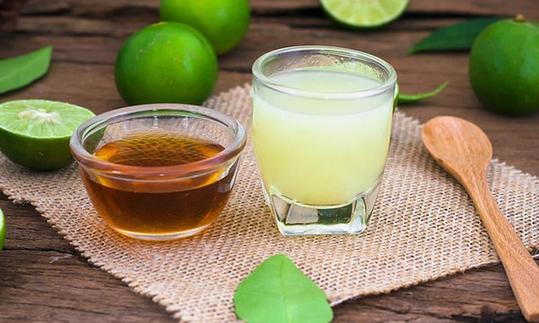

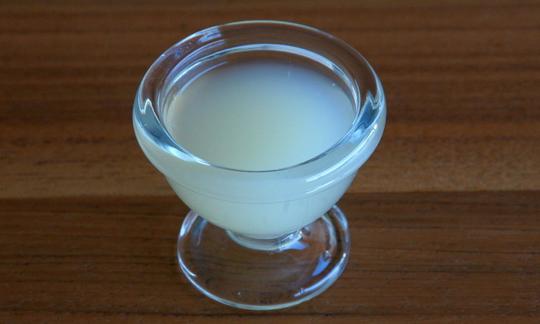

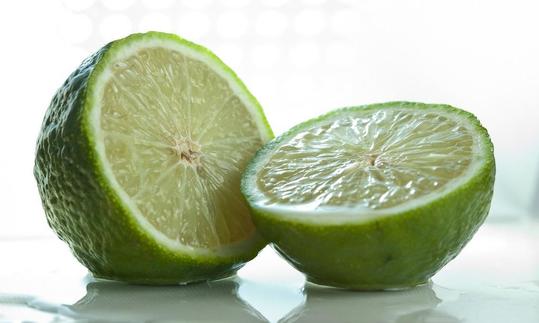

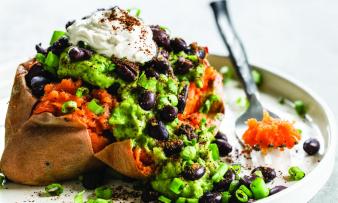
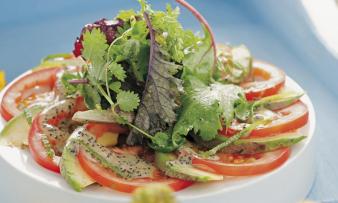
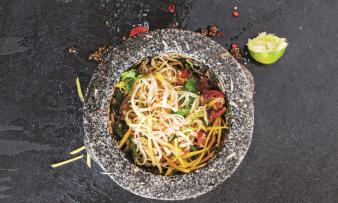





Comments